Sustained Relief at 12 Months
With Superiority to Standard Care through 6 Months1
Purpose
To report expanded outcomes and results for the INTRACEPT Study.
Study Design
- The INTRACEPT study enrolled 140 patients across 23 sites and randomization was stopped early due to statistical superiority at the pre-specified interim analysis; primary results were published in 2019, showing a highly significant difference between the Intracept arm and the standard care arm for the primary endpoint and all secondary endpoints at three months post-procedure.
- The publication reports outcomes for the full randomized trial cohort, including 6-month between arms comparisons, 12-month treatment arm results, and 6-month outcomes post-procedure for patients in the prior standard care arm that elected to receive BVN ablation upon the trial enrollment being stopped.
Key Findings
Mean ODI at 12 Months
Patients in the Intracept Procedure treatment arm realized a 25.7-point improvement in mean Oswestry Disability Index (ODI) from baseline to 12 months.
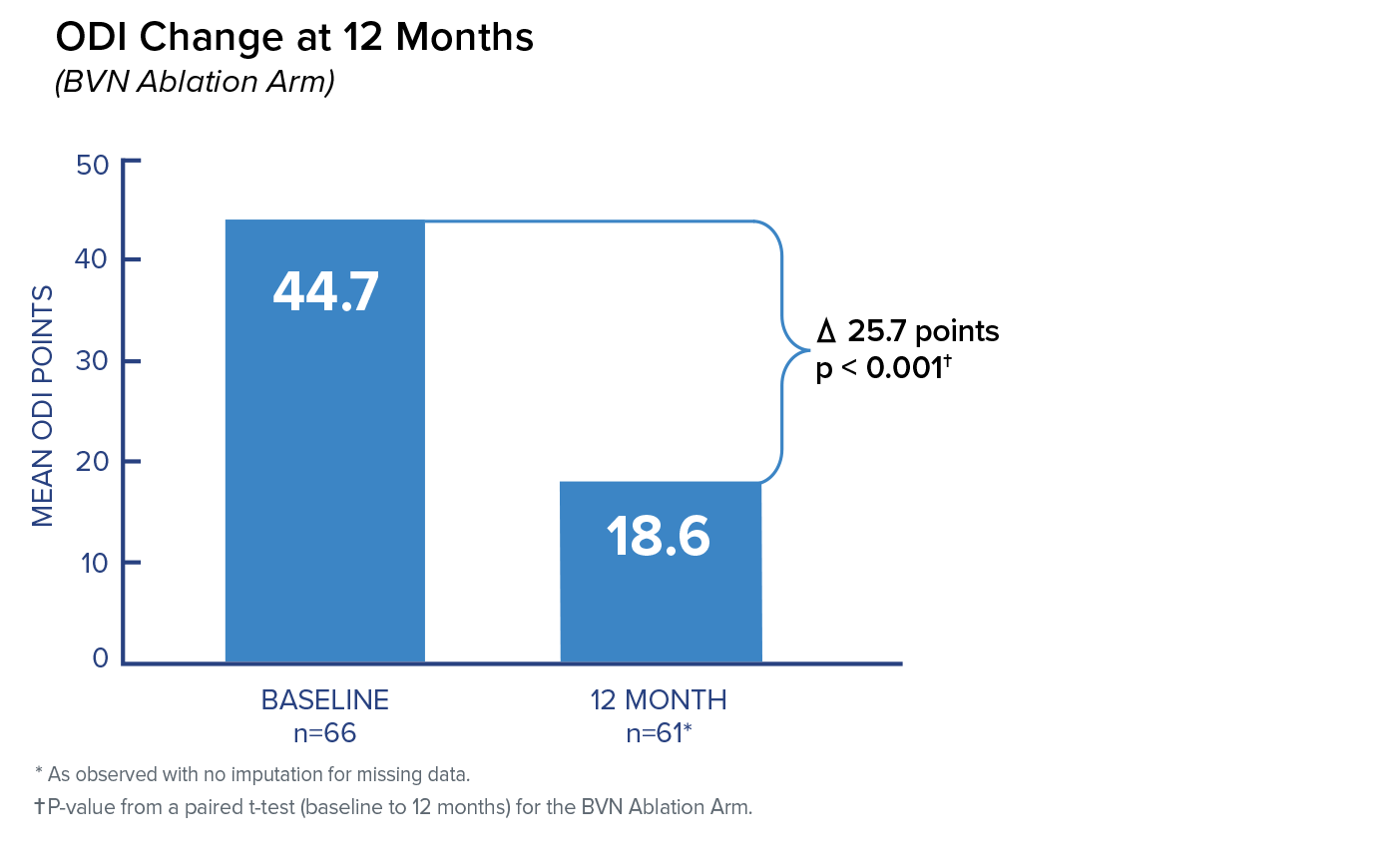
Mean VAS at 12 Months
Patients in the Intracept treatment arm realized a 3.8-point reduction in mean Visual Analogue Scale (VAS) from baseline to 12 months.
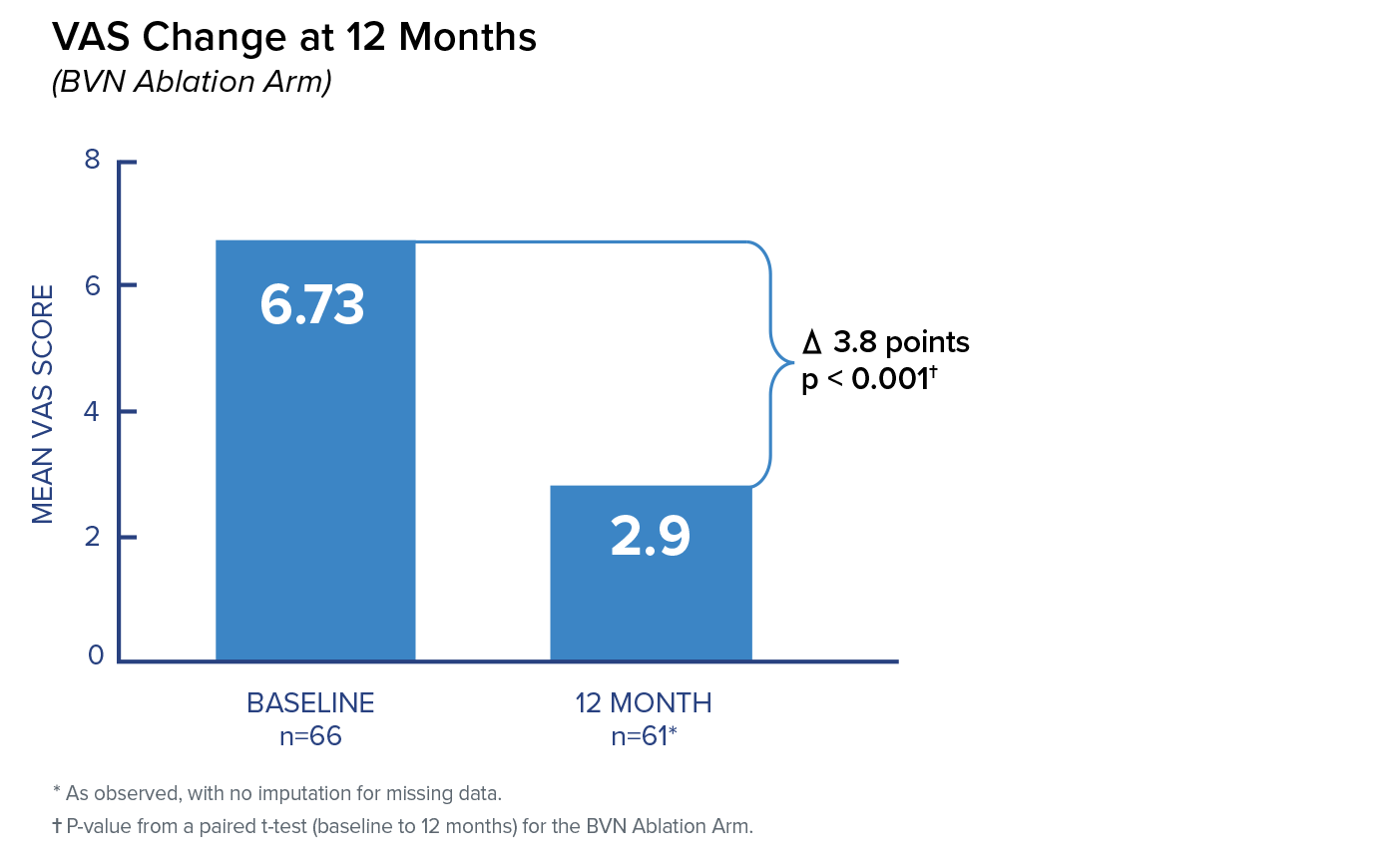
Mean ODI through 12 Months
Significant and sustained reductions in mean ODI were demonstrated after treatment in all BVN ablation patients.
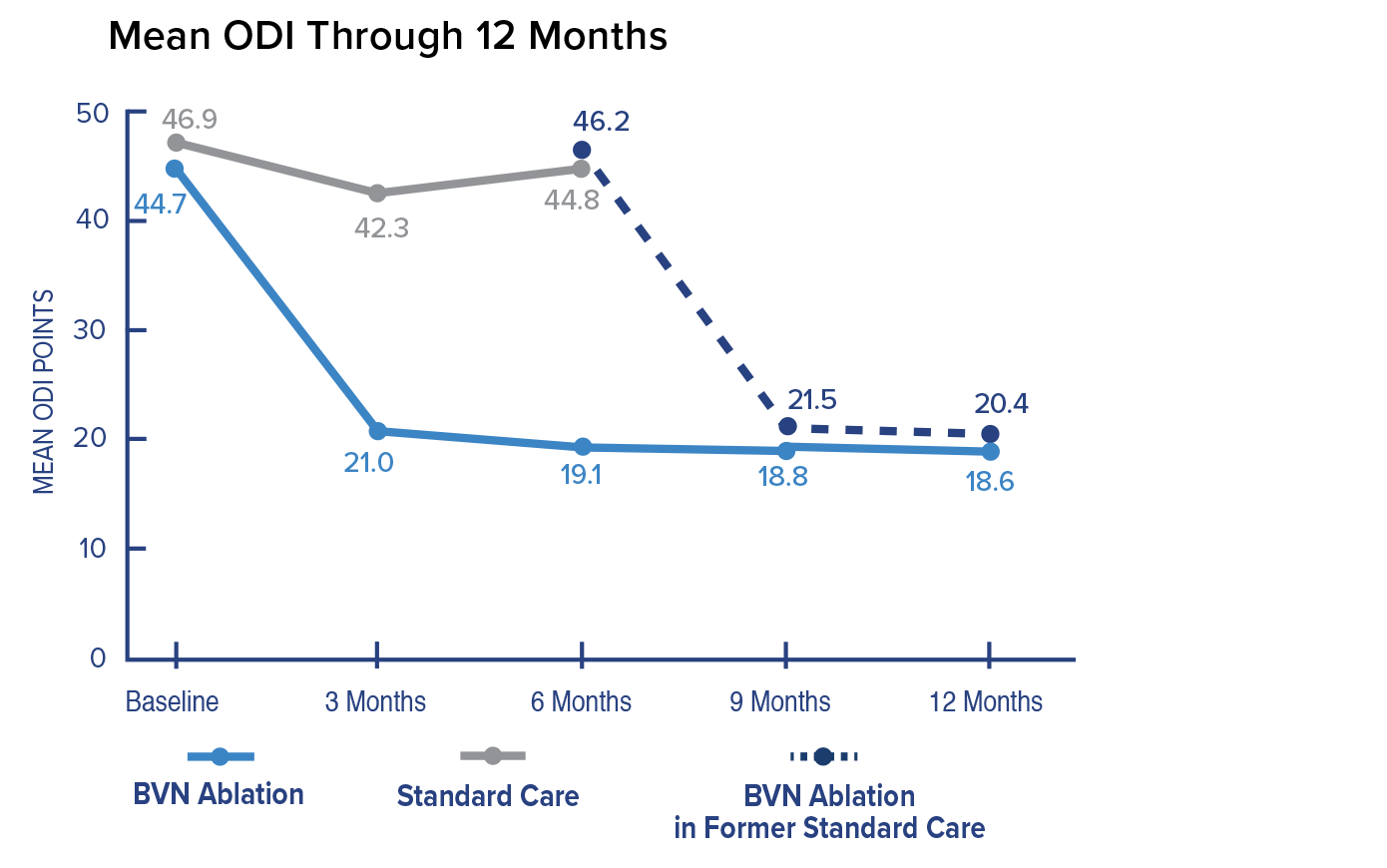
Mean VAS through 12 Months
Significant and sustained reductions in mean VAS were demonstrated after treatment in all BVN ablation patients.
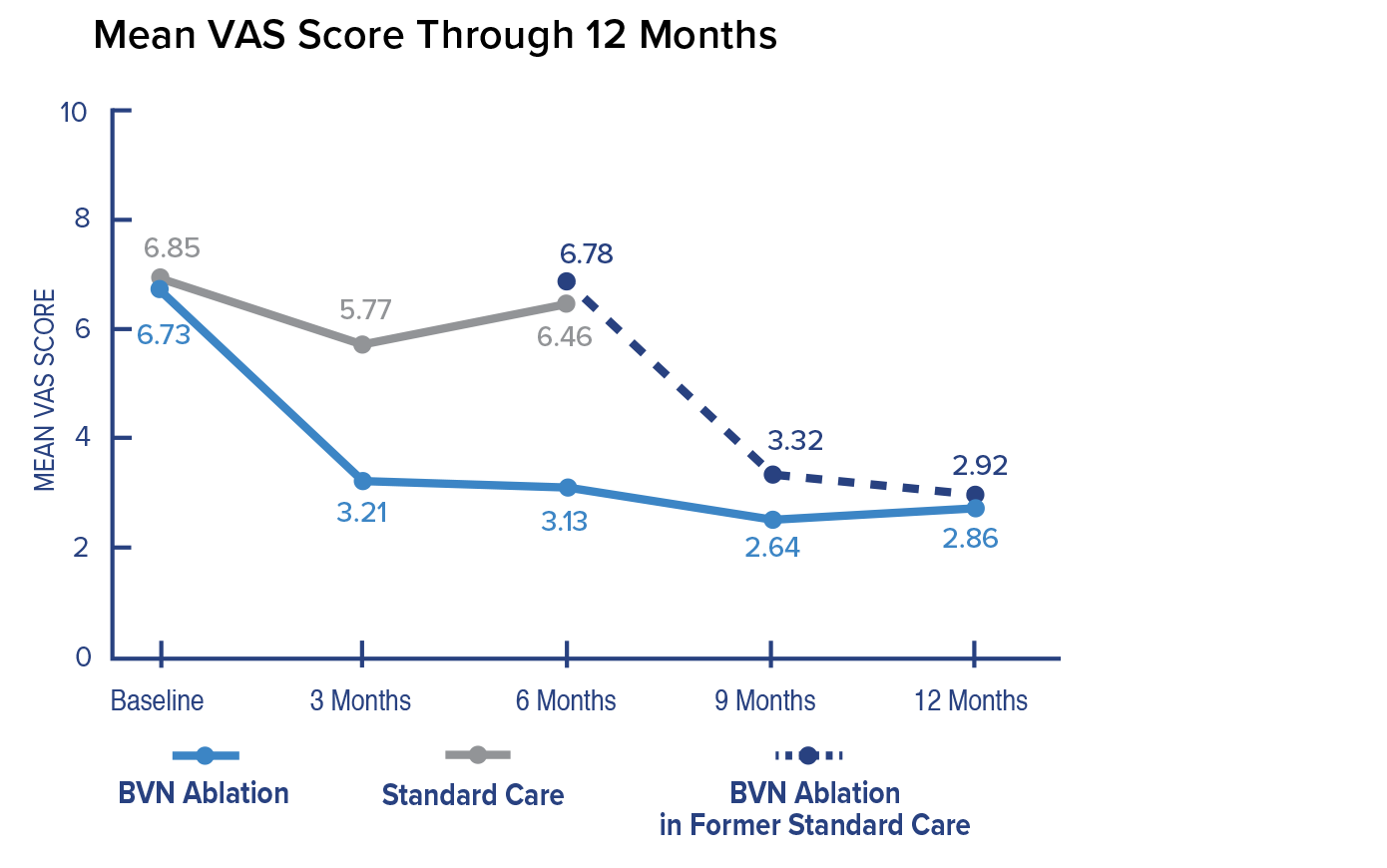
VAS Pain Reduction by Quadrant Improvement
In the BVN ablation treatment arm, nearly 30% of patients were pain-free 12 months after BVN ablation treatment.
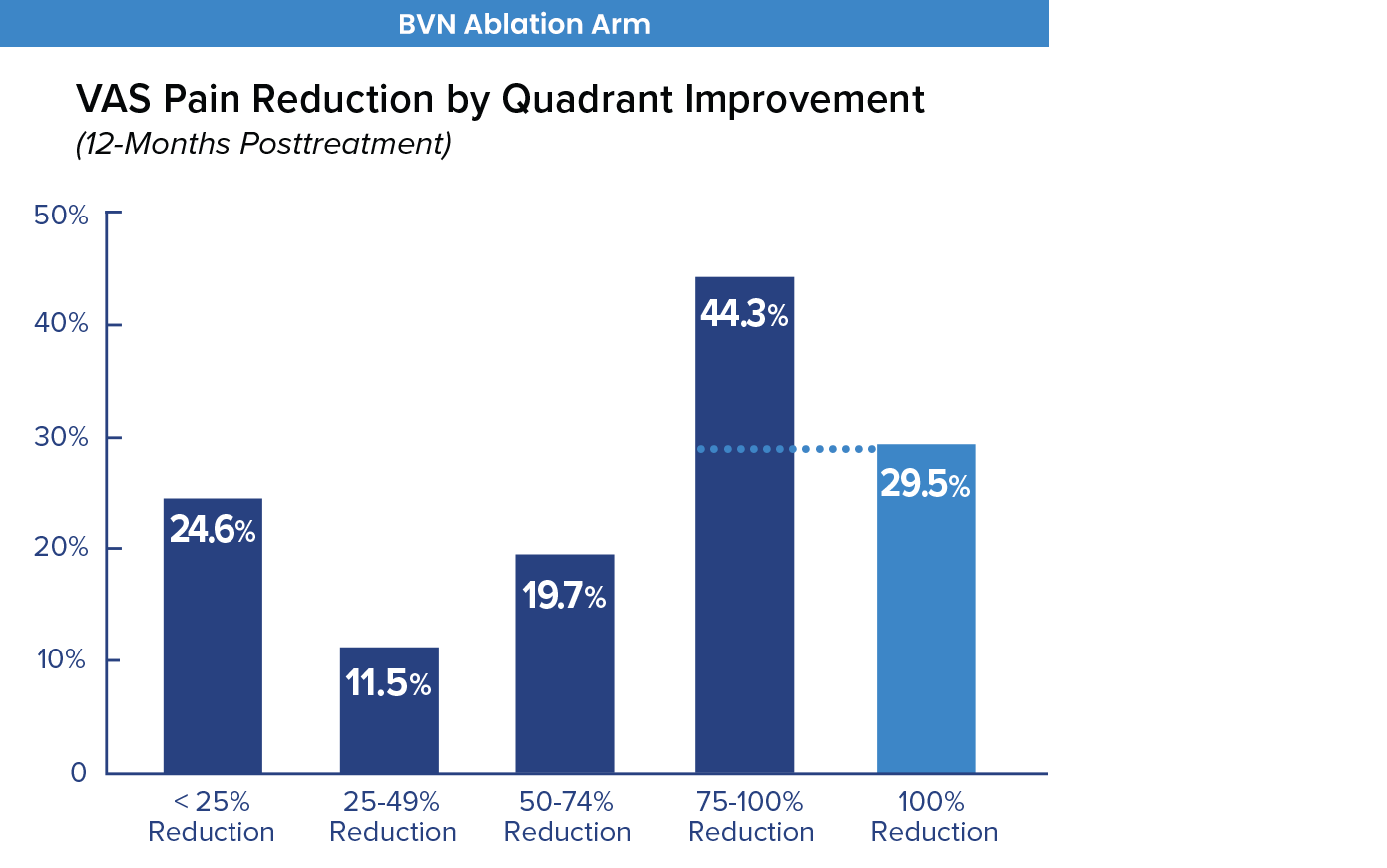
Responder Rates to 12 Months
Responder rates were significant compared to baseline in the BVN ablation arm. At 12 months, 60.7% of patients reported a ≥ 20 point improvement in ODI, and 78.7% of patients reported a ≥ 2 cm reduction in VAS.
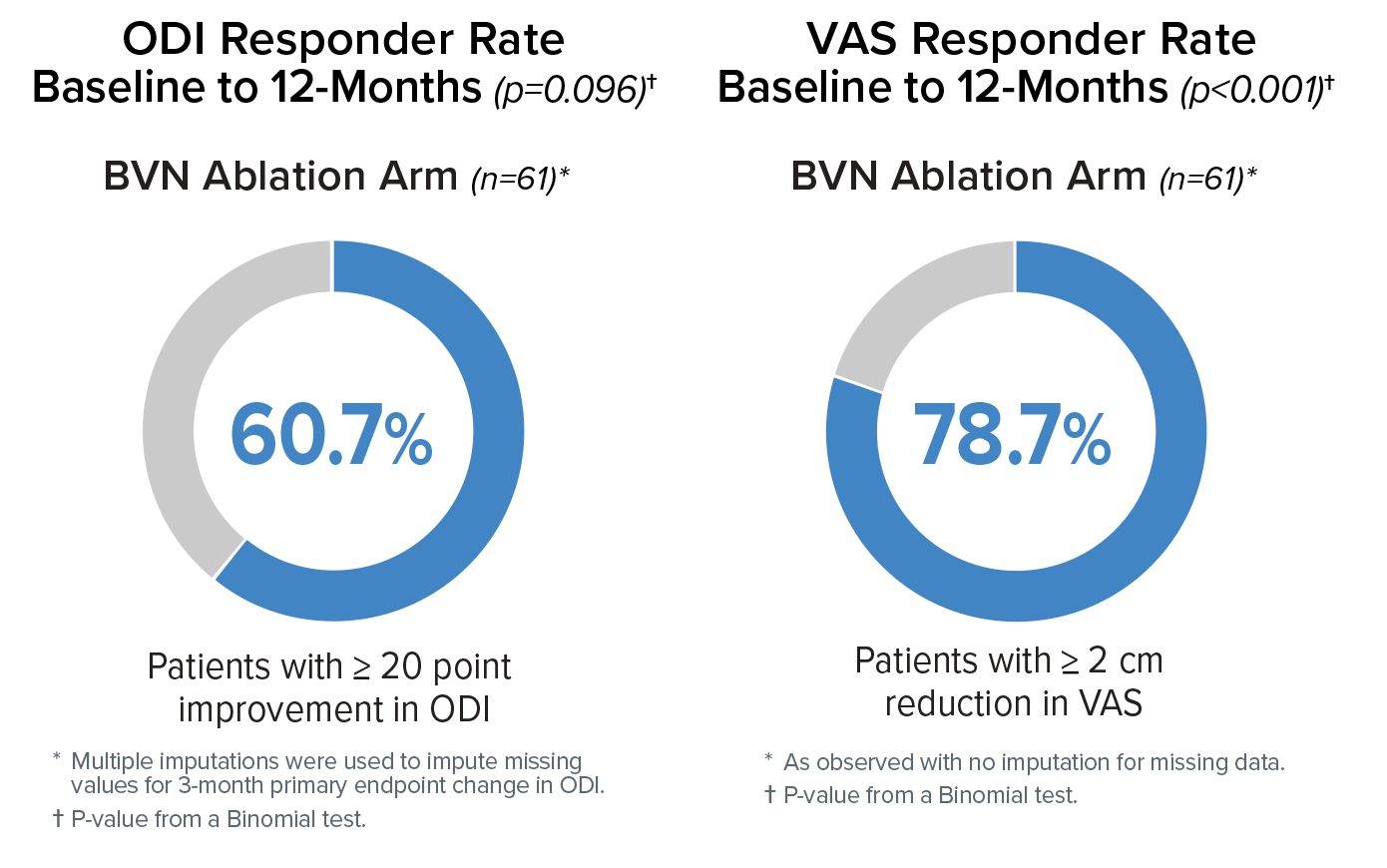
Safety Results
There were no serious device or procedure-related events in BVN ablation-treated patients in the study.
Conclusion
BVN ablation demonstrates significant improvements in pain and function over standard care, with treatment results sustained through 12 months in patients with chronic low back pain of vertebrogenic origin. These results are consistent with prior studies and further validate Intracept effectiveness and durability.